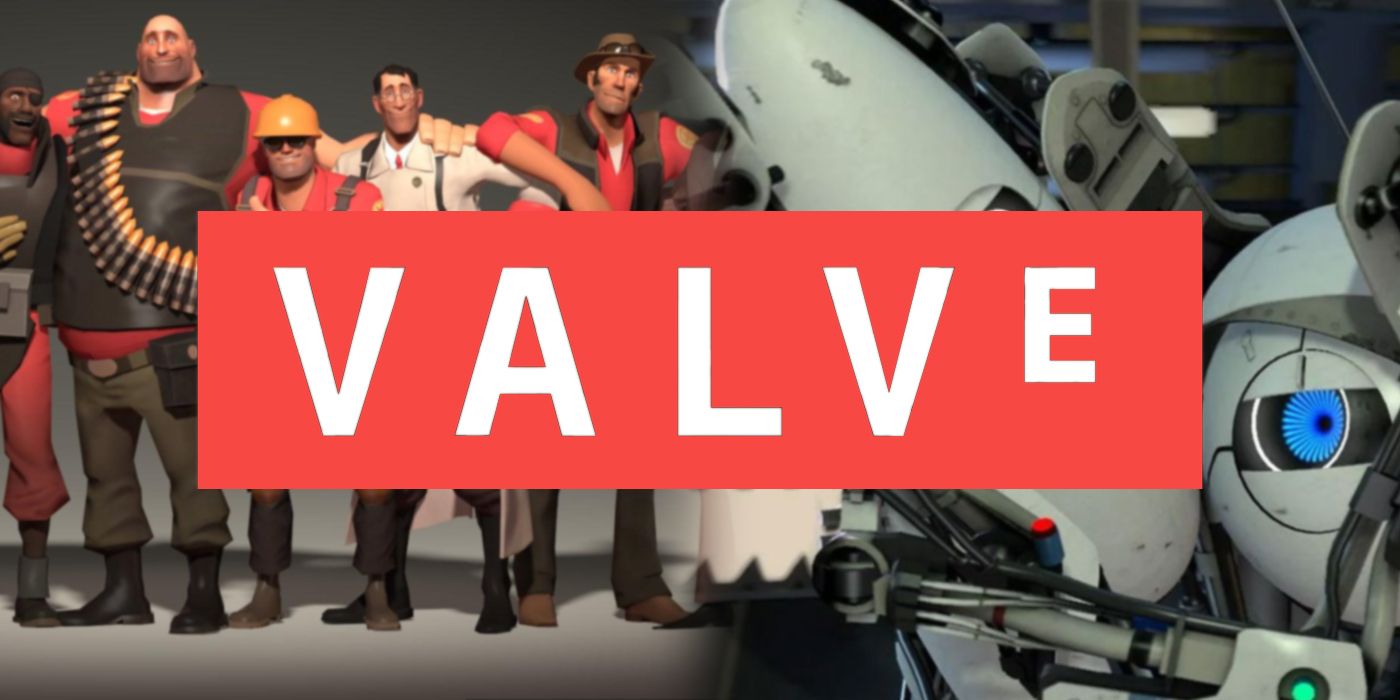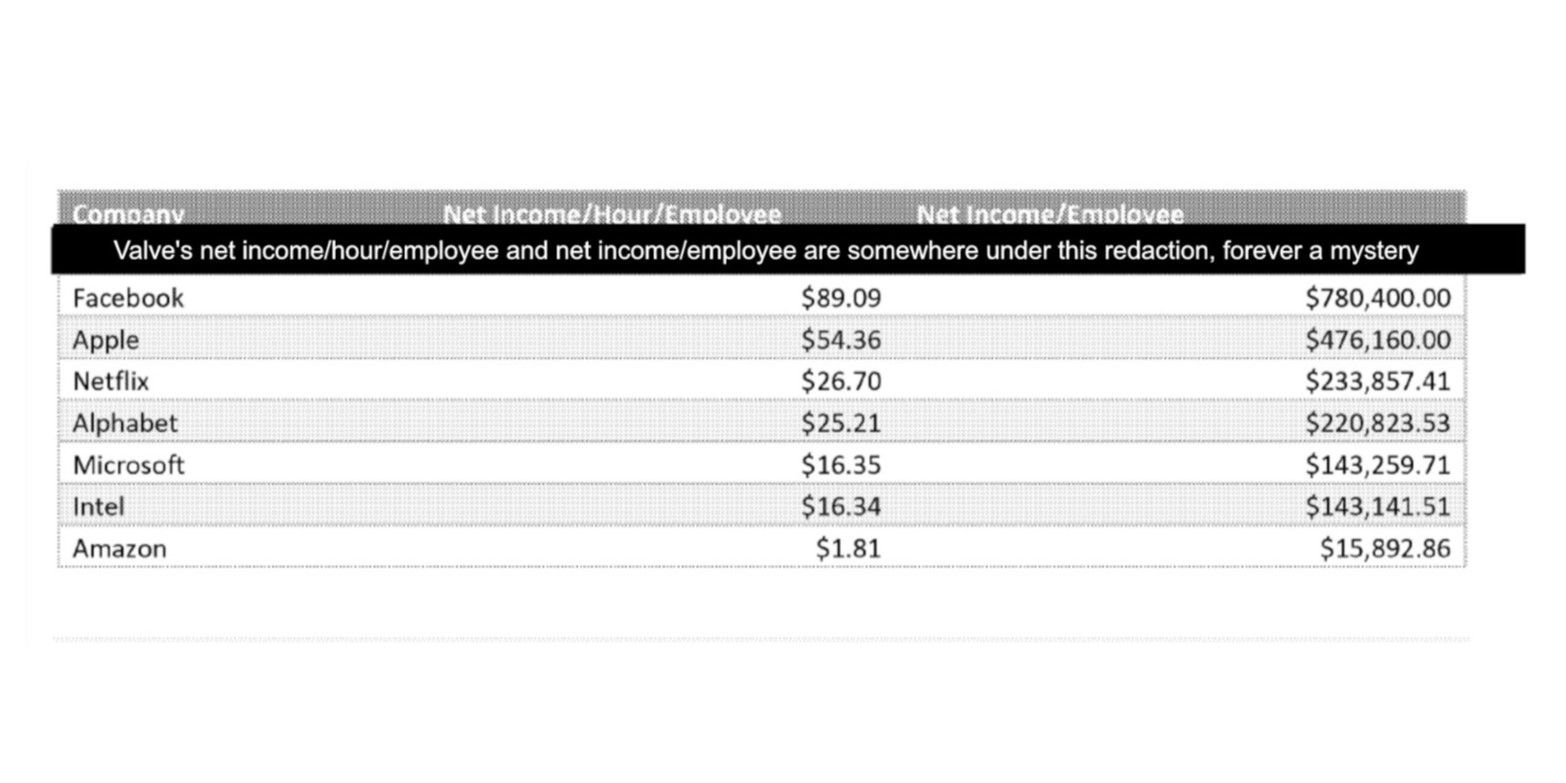
Valve reportedly generates more revenue per employee than tech giants like Apple, a feat that is almost impossible to comprehend without further context. By prioritizing digital distribution, Valve has created a low-risk, high-reward ecosystem that maximizes profits. This strategic pivot hasn’t been Valve’s sole focus, though. The company still has a sizable game development team. A good number of employees are dedicated to hardware as well. The internal division working on Steam actually doesn’t even make up the majority of the company. The golden era of Valve games may long be gone, but Valve isn’t exactly just sitting pretty.
How Valve Is Making So Much Money Per Employee
Never a Need To Upsize

For a company that makes so much money in profit, Valve is relatively small. Now, while Valve doesn’t generally make that kind of information public, a 2021 antitrust lawsuit filed against Valve revealed that the company had 336 employees at that time — that’s not a lot for a titan in the industry. In fact, that employee count is diminutive compared to the tens of thousands of employees that companies like Electronic Arts and NetEase employ. When it comes to money-making, this means that Valve’s employees are very efficient. Valve’s net income per employee isn’t wholly known, but some documents that have come out through the lawsuit help provide a good estimate. For reference, Facebook, or Meta nowadays, had a $780,400 net income per employee back in 2018. Valve makes even more than that.
It is very well possible that Valve made upwards of $1 million of net income per employee back in 2018. That might be the case even today unless Valve has internally grown at an unprecedented rate over the past several years. Valve has found quite a successful formula, though, so it’s unlikely that much has changed outside an increased focus on hardware.
One thing that isn’t likely to be accounted for in these financial calculations, however, are the contractors that Valve hires for certain responsibilities, like managing the support services of their products. In all likelihood, Valve is paying for a lot more people outside their 336 listed employees. The relatively small number of full-on hires by Valve could also be considered a detriment, though. Wolfire’s ongoing lawsuit against Valve would actually argue that it means that the company isn’t putting enough attention into improving its Steam platform. It’s hard to say who exactly is in the right.
Valve’s Current Plans and the Company’s Future
More of the Same Or More Innovation?




Valve really doesn’t need to do much to keep printing money. So long as Valve keeps the Steam platform going, the company is going to keep generating massive amounts of revenue. It doesn’t really seem like Valve is all that content with maintaining the status quo, though. The launch of the Steam Deck in 2022 shows that Valve is still committed to providing more for gamers.
Considering how much profit Steam drives with such little effort, it might seem odd that Valve wants to be an active participant in the hardware business. But generally speaking, Valve has always been a fairly pro-consumer business. The Steam Deck exists because there is an active market for it among more dedicated gamers. The return on investment isn’t especially great for Valve, but that’s not something they particularly mind.
As for their video game projects, Valve has Deadlock in the pipeline, at the very least. The company didn’t release any new games in 2024, which is understandably a disappointment; however, 2025 still presents many opportunities. But the reality of the situation is that Valve really isn’t all that committed to game development anymore. Multiple releases per year just isn’t a viable model anymore. It’s for the better that their new games come out with less pressure surrounding them anyway. That always leads to a more healthy environment internally. How Valve is doing on the inside has never really been all that clear, though.
Valve’s business practices showcase a unique blend of efficiency and innovation that sets the company apart in the gaming industry. By maintaining a relatively small team and outsourcing specific tasks, Valve has been able to maximize profitability without compromising on quality. The company has been able to stay fairly true to itself. Steam’s dominance has also simply allowed the company to generate massive revenue with minimal risk, creating a more than sustainable model.
While Valve still invests in projects like the Steam Deck to expand its influence, these projects have less to do with making easy profits and more to do with adding diversity to the gaming landscape. Innovation is still something that Valve pursues, even if fans might prefer that in the form of sequels to their favorite series. Those might eventually come, but Valve certainly isn’t desperate to make them.





